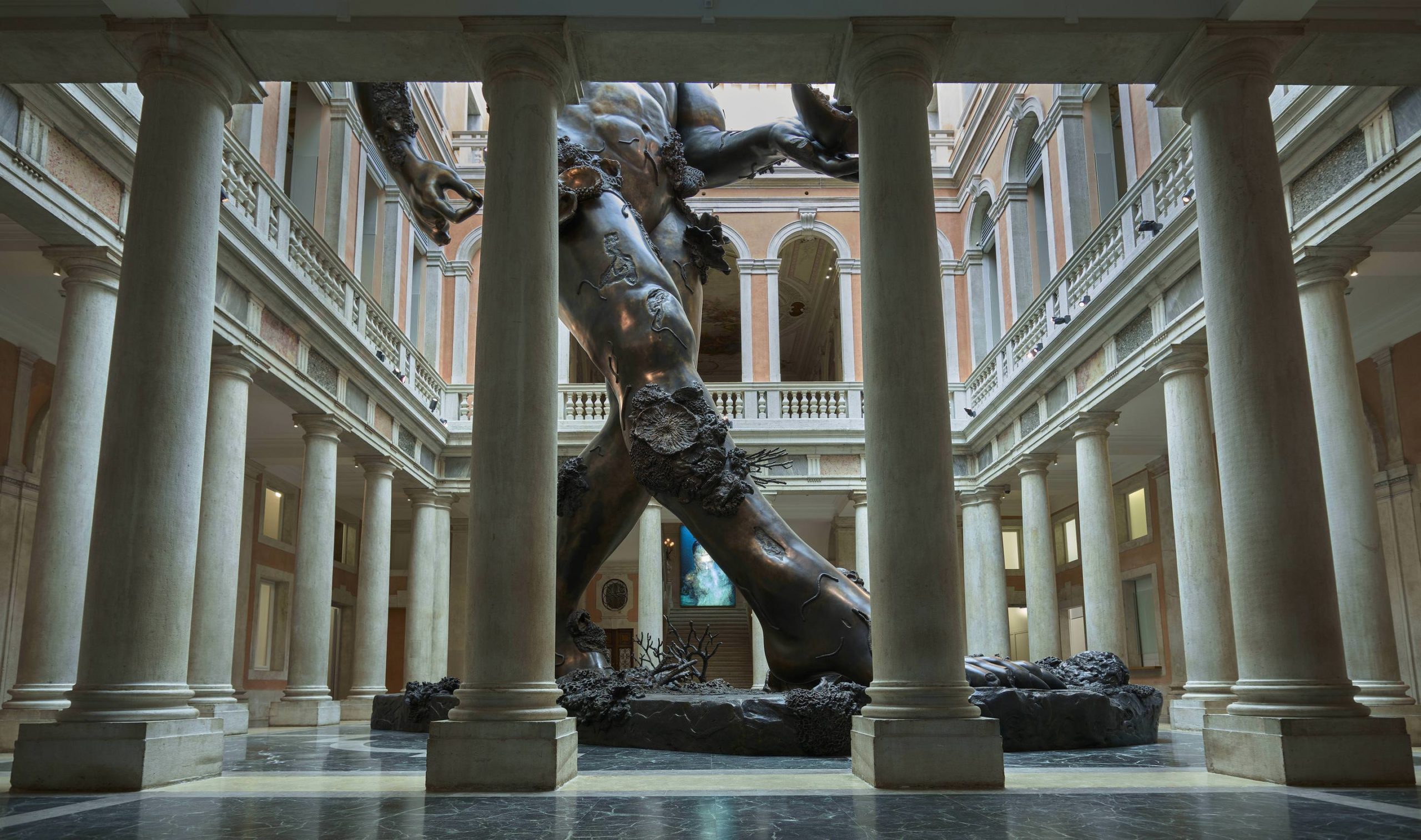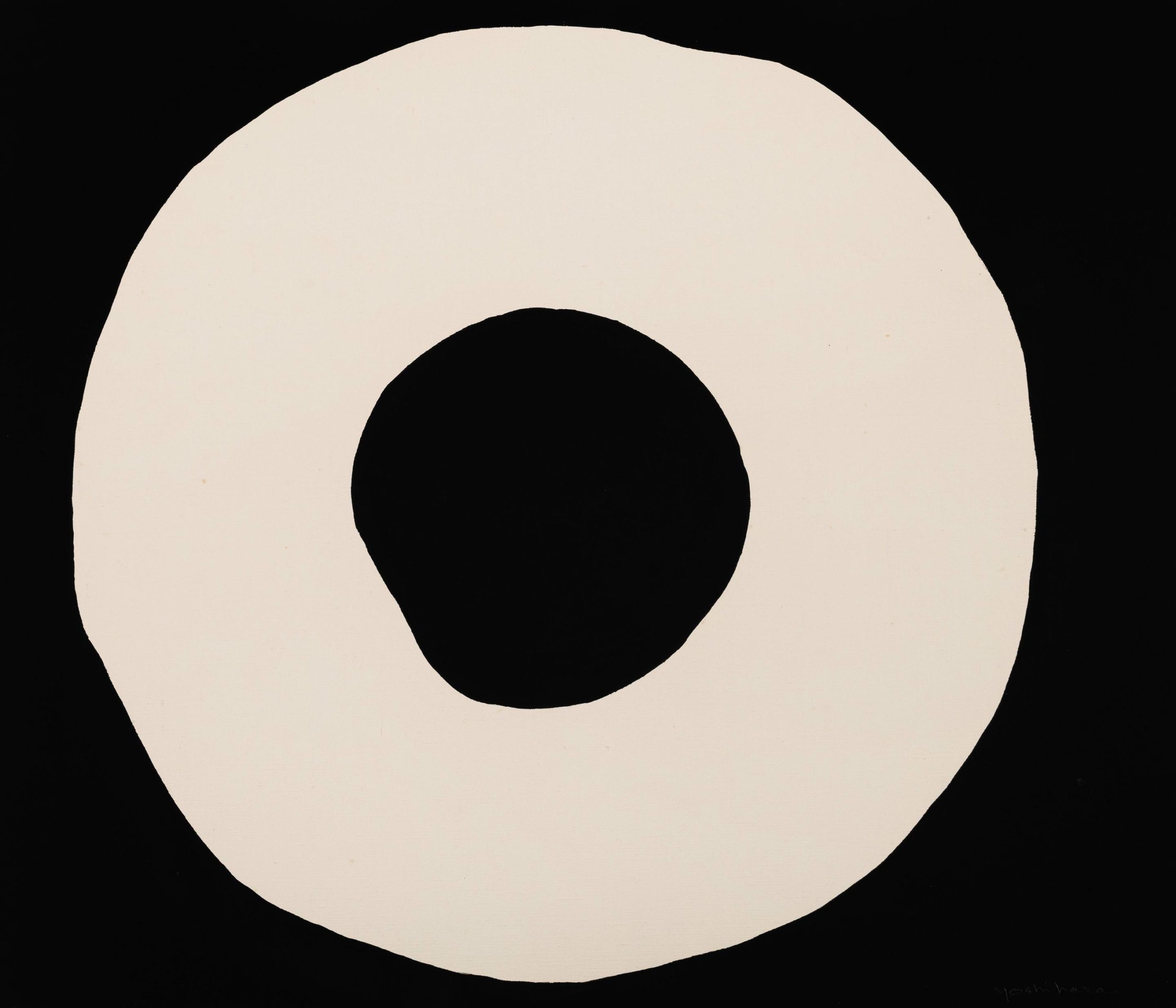Marina Adams’ “Soft Power” opened last week at Salon 94 Bowery in New York. On view through February 18, it is the artist’s first with the gallery, and includes a series of new paintings, both large-scale and small.
Adams is an abstract painter, working from her studio in New York and spending summers in the countryside of Italy. She sees her work as opening a space for thought, through bright colors and forms she’s sketched or drawn before transferring those gestures onto canvas. That act of creating the freedom for ideas she sees as radical, and even dangerous—but a “soft power,” to be sure.
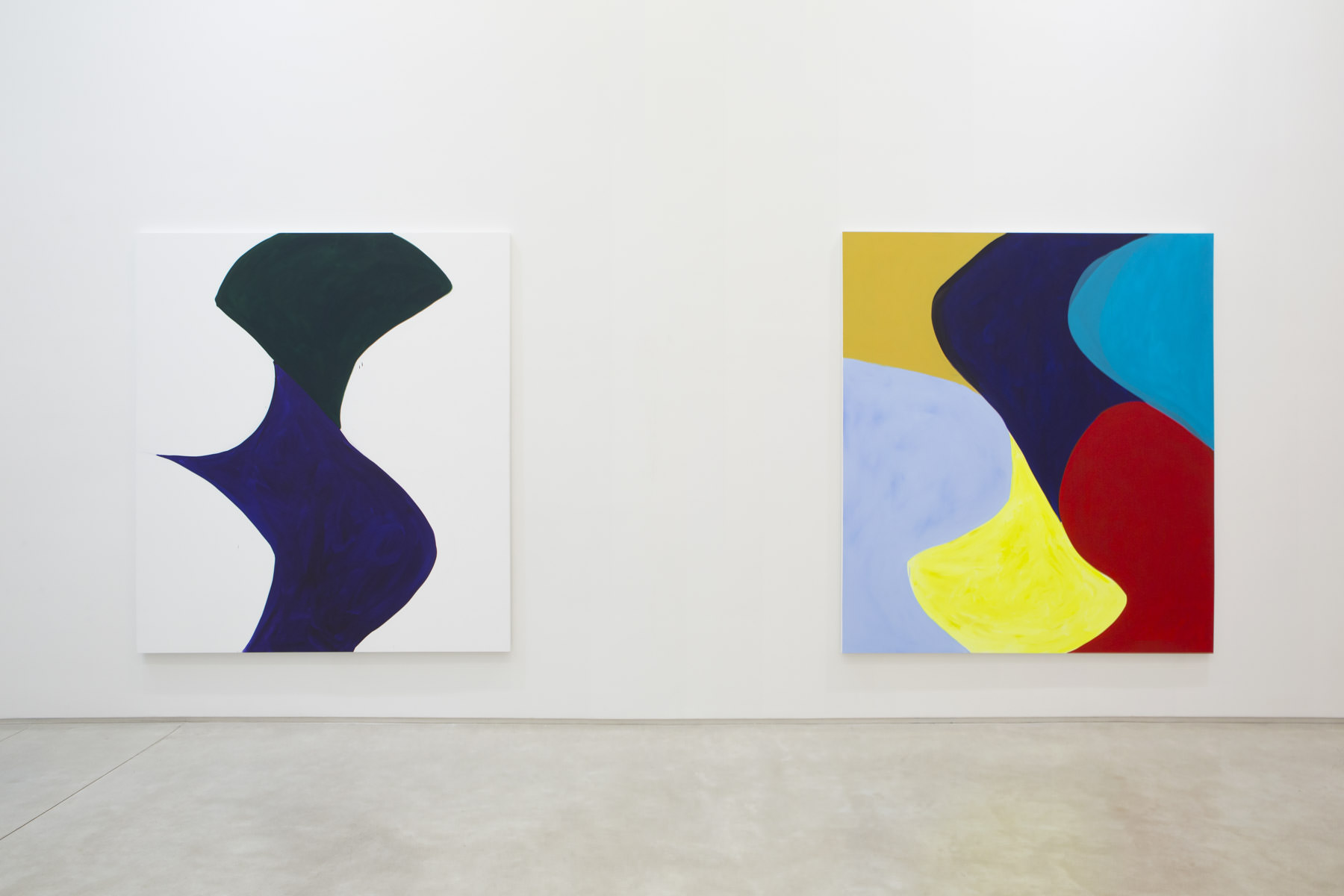
Installation view of Marina Adams’ “Soft Power” at Salon 94 Bowery
When Whitewall spoke with Adams late last year, she told us that she approaches her work as a practice. This was key, because as a practice, the possibility of fear is eliminated.
Today, on this sober Inauguration Day, we thought our conversation with Adams was the perfect fit for this week’s edition of “The Ascent.” She told us about finding confidence in her understanding of her own work, and how she stopped assuming others new more than she did. And she shared the epiphany she came to recently: “When we feel unified, then we have power. When we feel divided, we are already conquered.”
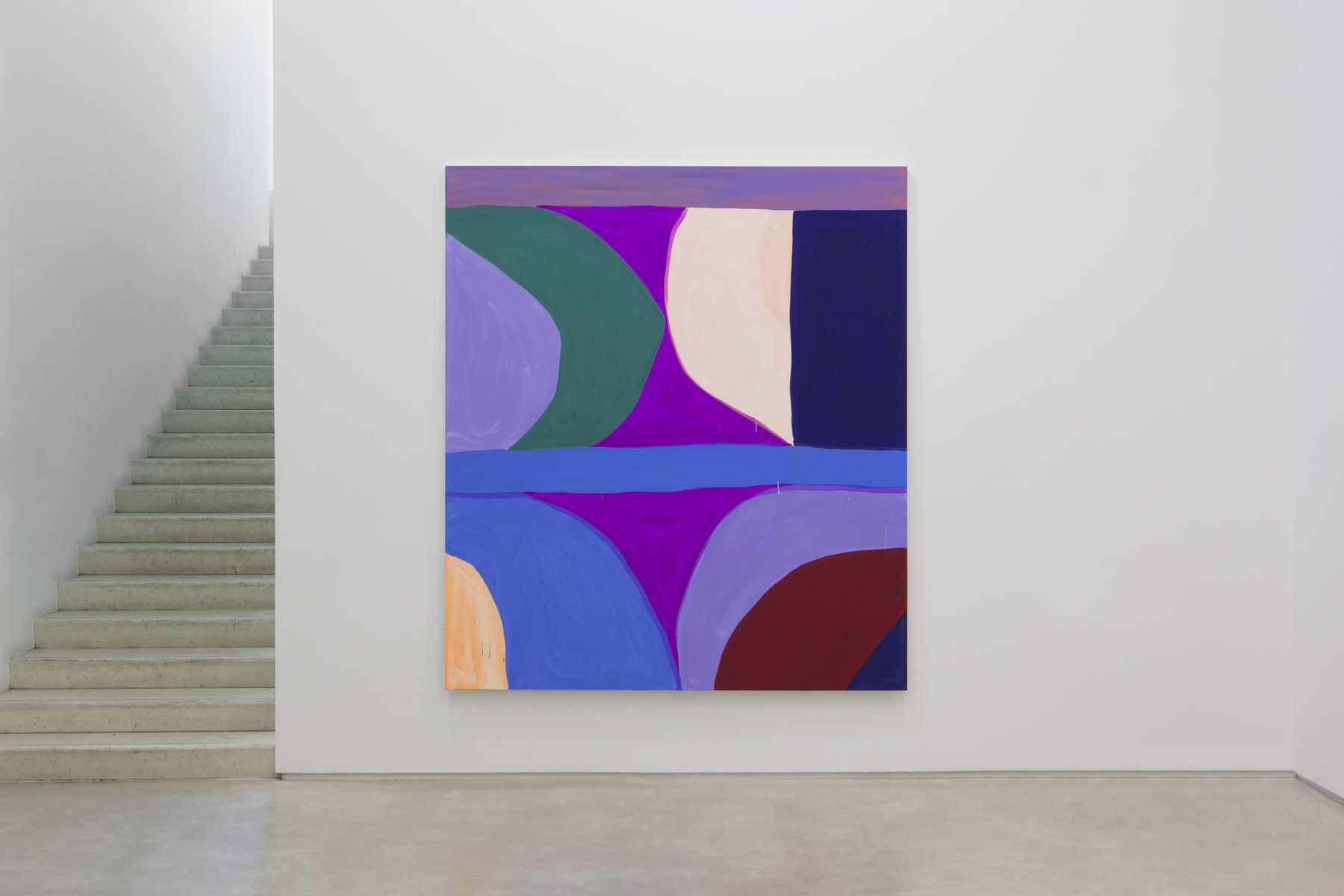
Installation view of Marina Adams’ “Soft Power” at Salon 94 Bowery
There is a wisdom in her work that comes from experience. It is a result of being actively present and mindful; a practice that speaks to not just artists, not just women or activists, but us all.
WHITEWALL: Was there a starting point for the body of work on view in “Soft Power”?
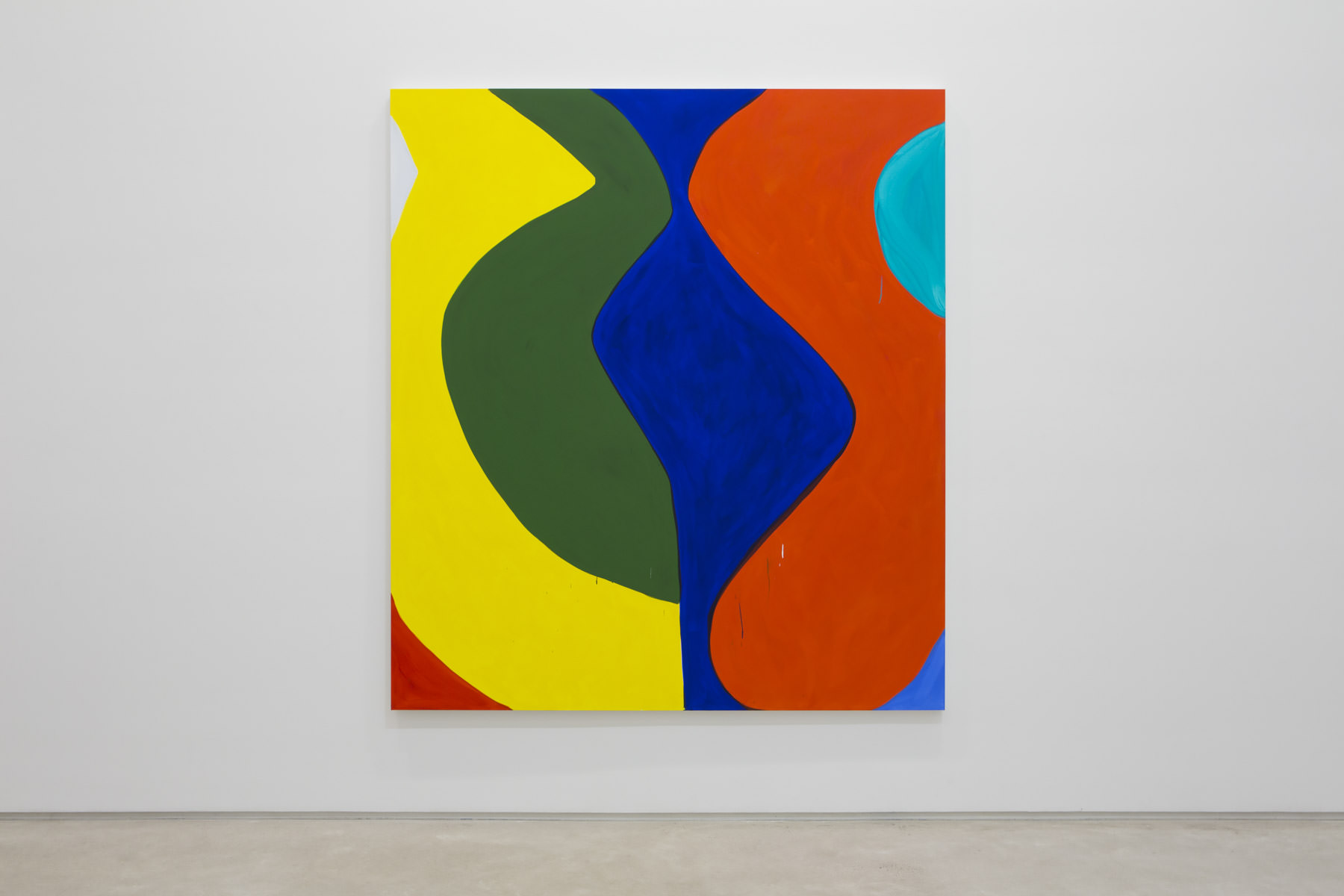
Installation view of Marina Adams’ “Soft Power” at Salon 94 Bowery
MARINA ADAMS: The title painting, Soft Power, and Second Sun were painted before I left for the summer. The other three paintings in the show on Bowery, Alice When She’s Ten Feet Tall, Bigger, and Standing on My Head, come from work I did over the summer in Italy. They were painted this fall along with four other slightly smaller paintings that have been installed in the office showroom on Freeman’s Alley.
WW: Right, you have been spending the summers in Italy. What kind of work do you make there, and how does that impact the work you make in New York?
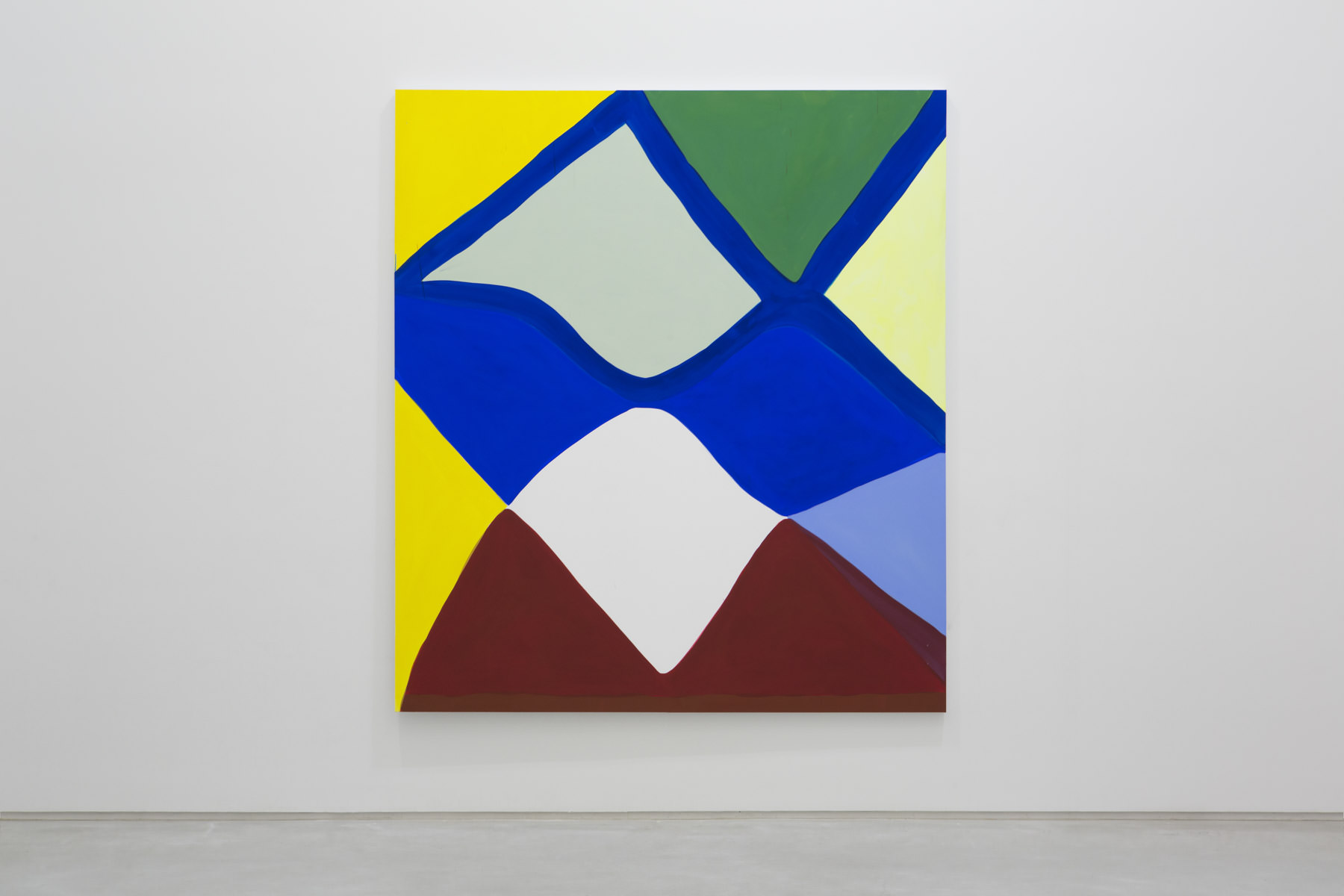
Installation view of Marina Adams’ “Soft Power” at Salon 94 Bowery
MA: The studio in Italy is in the countryside. What time and space are there is different than New York. The energy of New York is powerful, and it requires you bring your fiercest self. It’s also the place where I can paint the large-scale canvases.
Italy serves me well because it allows me to develop new visual thoughts. I do a lot of work on paper and smaller things that I can bring back to the NY studio. It’s a whole other space in the countryside, both physically and mentally. I feed the paintings with the work I do over the summer.
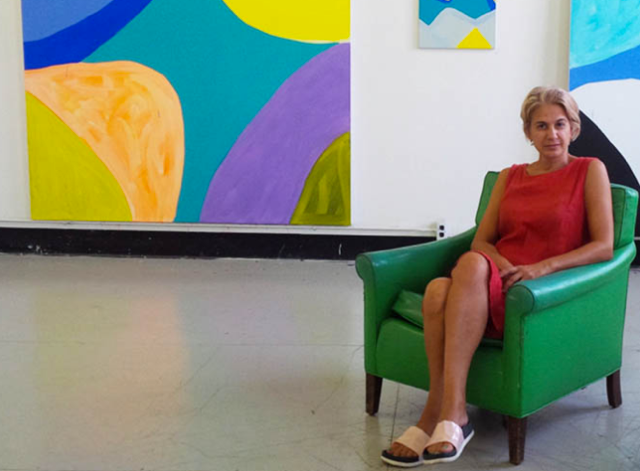
Marina Adams
It’s all about thinking about one’s practice and how to maintain it, how to grow it, and in that respect how to keep it alive and moving.
WW: Have you always seen your work as a practice?
MA: I think that I have, but I think now I have better language. The notion of a practice, I think about it in terms of walking. We’re in the middle of our lives and we walk, we don’t think about it. But if you think about what it was for an infant to learn to walk, and you think what it is for somebody who is disabled or very old to walk, you realize that walking is literally putting one foot in front of the other, taking one step at a time. When you break it down that way, you take the fear out of it. You focus on something that you can tackle, that you confidently do, and that’s what a practice is. It takes the fear out of it.
In the world right now, there is a lot fear, and fear produces hatred, fear produces all kinds of really terrible things. When you think about a practice, and what artists do, it’s another way of thinking about living.
Sometimes everything just flows and I wish it could always be like that. For me painting is the same. Sometimes the work just flows out of me. And sometimes I have to really fight for it.
WW: For this show, did the paintings flow out of you or were any a struggle?
MA: I think it’s the gambit. This isn’t something that you can control. Life is about constantly adjusting. And that’s what painting is for me too. I can put something down, and no matter what, there is always a process of adjustment that I have to feel out. And that has to be in the moment, you have to be awake to do that, you have to be present.
As a painter, I deal with a blank canvas and take that on. It never changes. You always start at the beginning. What you bring to it, what does change, is your experience and experience if you’ve paid attention, can turn into wisdom. And wisdom brings with it a confidence. The difference between me now and let’s say 20 years ago is I’ve been through some things and I know that no matter how disastrously a painting can go, or how difficult, how rough the waters can sometimes become, I’ve developed the ability to turn those sails. I know that I just have to calm down, I have to relax, and I have to become sensitive to the wind and shift the sails.
WW: The titles of your works are almost lyrical, and I know you’ve collaborated on publications with poets. Could you talk about your titles and their relationship, if at all, to poetry?
MA: I did three books with three different poets. The most recent is Actualities (Litmus Press) with the poet Norma Cole. I’ve done other smaller collaborations and people have used my work on their covers. It’s a great dialogue. I love what poets offer the world. I think what they do with language is extraordinary, it’s refreshing, and it’s necessary. They bring a depth of meaning that for me is very similar to what I try to do in a visual way.
I look for language I guess when it comes to titles, but it doesn’t all come from poetry. I think that language is a way in for people. And with abstract work, you’re not offering a narrative and for some people it’s much more difficult. They don’t know what they’re looking at, and that not knowing can create a sense of insecurity and fear. You do need to give them something if they feel like they’re being left out. Language is a way into a work. But you also don’t want to be descriptive, or at least I don’t. The titles do not illustrate the work; hopefully they broaden the experience of it and sometimes they can make you laugh. Ultimately the work is a visual experience.
WW: You’ve said that abstraction creates a space for thought, rather than dictating that thought. And poetry does that, as well. It has an open possibility for experience. It’s generous that way.
MA: That’s a great word. I love the word generous.
WW: I wonder if that’s something, was that what attracted you to working with abstraction?
MA: That thought was an epiphany, to tell you the truth. I was at the Alhambra, I must have been in my twenties, in Grenada at the Moorish Palace. It’s all tiled. So I was not looking at abstract expressionist paintings, but I was looking at all that color and pattern and repetition in the tile work, and it gave me this insight into an experience that is not narrative. It occurred to me that the work itself could be exactly that—it could be a space for thought and an experience.
Matisse used the analogy that a great painting should be like sitting in an armchair. What he was saying, and this goes back to the practice, is that you have to relax. You have to let your mind relax and you have to let your body relax. A great painting hopefully opens something up in you. And when something opens up in you, you can have a thought or experience you’ve never had before.
This makes us more human and this is why art is so crucial and this is why culture is so important. For me it was an epiphany [at The Alhambra] recognizing that when you are not given a narrative and are left with, “How do I deal with this?” Well as I say, “Relax. Breathe. Let yourself just enjoy it.”
What we do as artists is very important. The curators, the critics, the people asking the questions, this is all building something that I think is really strong, really important, and really necessary, and really does ultimately fight against all the things we are now terrified of.
WW: You keep going back to this idea of your art as a practice. When did it become a practice for you? When did you start to see it that way?
MA: I like to say I was an artist before I knew what that meant. I think I was born an artist. I started to figure out, as I was growing up, that when I looked around myself, I didn’t see myself in anybody and I didn’t really relate to anybody. I knew there was a world where there must be people like me.
And then the business of it, that’s a whole other thing, and that took me a long time to figure out. I remember having people over the studio when I was young and thinking that they knew more than I did. I was expecting the visit to tell me something about what I was doing. When they left I was always disappointed and I finally realized it was just foolish of me. That I knew more about my work than they did.
WW: It can take a long time for us to get there, though.
MA: It does but that’s part of the process. That’s life. Experience, if you pay attention, it becomes wisdom. Even now, I feel like there is all this emotion, and there is this moment when people feel that they want to do something but where is the front line? How do we get clarity? How do we not waste the moment?
When we feel unified, then we have power. When we feel divided, we are already conquered. I think we need to look at things in a bigger picture. We are emotional, human beings. That’s where the battle line is. It’s easier to feel divided than it is to feel unified. That’s the fight if you ask me.





